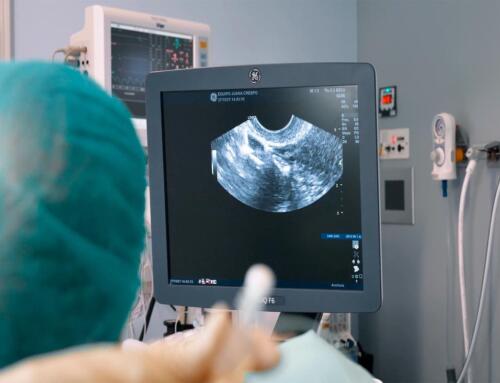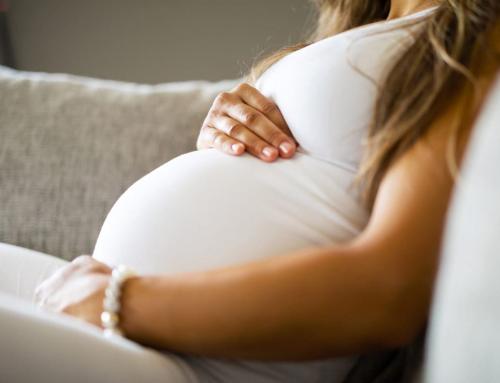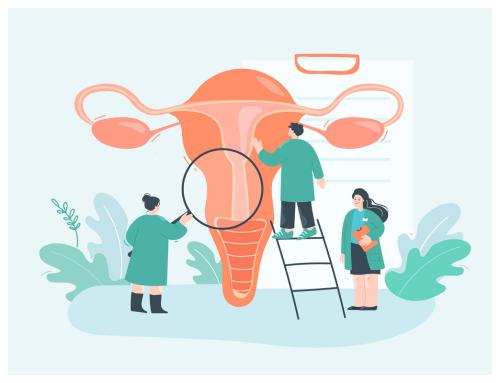Implantation bleeding appears in some women between the first and second week of pregnancy. This is due to the irrigation the endometrium receives when the fertilized egg arrives in the uterus, remaining there for the rest of the pregnancy.
This phenomenon is usually confused with menstruation, as the difference in the bleeding is very subtle. It basically differs in that it may be slightly darker and of shorter length than periods.
Implantation bleeding can confuse the mother-to-be, since she might believe the spotting is due to the arrival of her period if she is not aware of it.
In this article from Equipo Juana Crespo we will help you understand the concept of implantation bleeding and how to recognize it.
How does the process of fertilization begin?
The magic of the fertilization process begins when the egg receives the sperm creating a zygote or fertilized egg. When the zygote starts its segmentation process, it forms a morula which becomes a blastocyst after dividing for 72 hours or approximately 3 days. This cell adheres to the uterus wall to form the embryo.
Fertilization
Once the patient has undergone conventional IVF or ICSI, and approximately 18 hours later, it should be possible to observe 2 pronuclei in the cell. In other words, fertilization has been successful and the embryo is in the development phase.
On the second day, the embryo should enter the cell division phase (between 2 and 4 cells). By the third day, it will increase. (6 and 8 cells). By now, the embryologists begin to observe certain parameters such as: aspect, symmetry, number of cells… that help to classify the quality of the embryo in order to select the best ones.
If the embryo culture is prolonged in the laboratory (IVF), the embryo will divide further, forming a mass and reaching the cavitating morula state. So on the fourth day, we will be in the pre-blastocyst phase.
The blastocyst is a stage in the development of the embryo that usually occurs 120 hours after the puncture (fifth day). We know it is a blastocyst because of its appearance and structure, that is, it must have an optimal internal cell mass and a trophyectoderm with hundreds of cells. When the embryo has the right structure it is transferred to the woman’s uterus where it will continue to evolve.
The approach of the blastocyst to the endometrium is literally an invasion, causing a tear where new terminations are formed and amalgamate, and where the future embryo remains attached to the wall of the uterus.
Beginning of bleeding
At this moment, the confluence of this new element in the area and the anchoring process provokes irritation and a consequent tear causing implantation bleeding.
It is estimated that between 25 and 30% of women with pregnancies will experience implantation bleeding, so it is important avoid discarding pregnancy in this case.
Women who are thinking of becoming mothers can pay special attention and notice differences to those provoked by menstruation and therefore be prepared.
Implantation bleeding and menstruation: main differences
The bleeding from the process of embryo implantation is usually somewhat darker than menstrual bleeding. It is the first sign that can be evaluated with the naked eye.
After the color, you should also pay attention to how heavy you are bleeding since implantation bleeding is lighter than menstrual bleeding.
Finally, be aware of how long the bleeding lasts. At day 14th, the blastocyst fully settles in the uterus, so the implantation bleeding time is shorter than the duration of the period.
Other related symptoms
There are some other signs that may assure you of the kind of bleeding you are experiencing. As women, we can feel some changes in our bodies such as: breast sensitivity, alteration in basal temperature, frequent urination, nausea, headache, discomfort or tiredness, among others.
It must be clear that each organism experiences the embryonic implantation process differently. That is why some women will not even have any symptoms while others will bleed. So it’s important to be aware of the kind of signs you might encounter.
When in doubt, the best solution is to go to a specialist and have a pregnancy test done 10 to 12 days after the transfer -preferably at least 12 days after ovulation-, to confirm whether the bleeding is due to conception, menstruation, or any other cause.
At Equipo Juana Crespo we are ready to help you in any aspect related to fertility. Contact us, come and visit us, and leave your doubts behind.
















